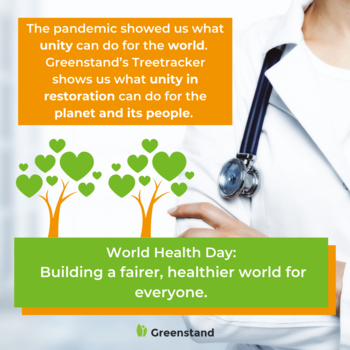How Trees Improve Mental Health
In honor of this year’s World Health Day, we’ve brought you some research-backed tips on how interacting with trees can improve your mood and overall health. Read on to see what a difference getting out into nature can make!
Introduction
Humans and nature have always had a symbiotic relationship. With increased modernization, we can forget how nature has been beneficial for humans in the past, and so we fail to prioritize it in our lives today. Regardless of why trees provide so many benefits, the presence of trees and green space promotes well‐being. Trees and greener environments are strongly linked to reduced negative thoughts, decreased symptoms of depression, better reported moods, and increased life satisfaction. A view of trees can help patients recover in a hospital and reduce diastolic blood pressure and stress in research participants. Residents of tree‐lined communities feel healthier and have fewer cardio‐metabolic conditions than those without. The presence of trees can even improve the condition of people with neurodegenerative diseases. Greenstand recognizes how important trees are for communities and their well-being, which is why we promote community-based agroforestry that allows populations to thrive when surrounded by trees they’ve grown.
Eco-Therapies
Forest therapy is rooted in the Japanese practice of Shinrin-yoku, which translates to “forest bathing.” The basis of this widespread practice lies in making contact, taking in, and connecting with a forest’s atmosphere with the intention of improving an individual’s mental and physical states. Walking through the forest lowers cortisol levels, heart rate, blood pressure, and decreases the presence and indirect effects of stress and mood disorders.
Shinrin-yoku has a tremendous amount of documented positive health benefits for an individual by immersing themselves in nature. Those who live and interact in green spaces report being more energetic, in good overall health, and have more of a sense of meaningful purpose in life. Historically, humans intuitively know that nature has great benefits for the brain, their happiness, health, mental wellbeing, and cognition.
Horticulture therapy is a practice that has been documented since ancient times. Around 500 BC, Persians began creating gardens to soothe all the senses using beauty, fragrance, cool temperatures, and the sound of flowing water. Creating green spaces is a cost-effective method of combating mental and physical health problems. Through horticulture therapy, alone or with a group, humans can improve their mental health by creating a sense of purpose and achievement from visually watching these plants grow and achieve better physical health through being active in nature. In addition to one’s personal health, growing gardens provides the opportunity to connect with others – reducing feelings of isolation or exclusion. Given the multi‐faceted health benefits of the ecosystem service ecotherapy, the very act of planting and caring for trees may promote mental and physical health. Trees not only make people happier and healthier, but they make communities more livable.
Having more trees, especially the right mature species planted in the right locations, can reduce particulate matter and other forms of air pollution, which could reduce mortality and morbidity in urban centers. We know that socioeconomically vulnerable groups have worse health outcomes than their wealthier counterparts. When considering ethnic minorities, such as indegenous groups, this is compounded.Greenstand recognizes that planting and growing trees can help create healthier communities in both rural and urban contexts. By creating monetary incentives for tree growers to take care of their environment, we ensure that they don’t have to compromise their personal health – physical or mental – to make a living.
Conclusion
Like any investment, if trees are not cared for, they depreciate in value and can become a liability. Through planting and care, however, forests can amplify benefits that are cost-effective, trickling through every layer of society, leading to a better world. The Treetracker platform allows tree growers to receive payment as long as they care for trees, so that, in the future, people all over the world can have access to the benefits of forests. Improved livelihoods and overall mental well-being are only some of the positive impacts from growing global forests. Green common areas for people to enjoy facilitate the development and maintenance of stronger social ties — the very fabric of a healthy community. We must act now for a better world.
Marie Carr
Communications & Marketing Contributor
Back
